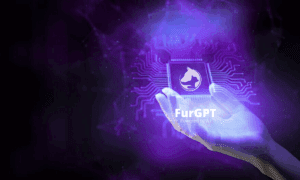Welcome to the world of automation! In this fast-paced era, where time is a precious commodity and efficiency is key, the concept of automation has become an indispensable part of our daily lives. From self-driving cars to smart home devices, automation has revolutionized various industries and transformed the way we live and work. But what exactly does it mean? And how does it impact us on a personal and professional level? Join us as we embark on an exciting journey through Automation 101, where we unravel its definition and explore its wide-ranging applications that are shaping the future.
What is Automation?
Automation can be defined as the use of technology to complete a task or process without the need for human intervention. This can be achieved through the use of various technologies, such as robotics, artificial intelligence, and machine learning. Automation has been widely adopted across industries in recent years as a way to improve efficiency and productivity.
There are many different applications of automation. One common example is the use of robots in manufacturing settings. Robotics has been used in factories for decades to help with tasks such as welding, painting, and assembly. More recently, robots have been developed that are able to work alongside humans in more delicate tasks such as electronics assembly and food preparation.
Another area where automation is being increasingly used is in customer service. Chatbots are a type of artificial intelligence that can mimic human conversation. They are commonly used to handle simple customer queries such as product information or delivery times. More sophisticated chatbots can handle more complex questions and even make recommendations based on the customer’s preferences.
The field of transportation is another area where automation is having a major impact. Self-driving cars are now being tested on public roads, and it is expected that they will become more widespread in the coming years. Similarly, autonomous drones are being developed for a variety of commercial and military applications.
As you can see, automation is already present in many aspects of our lives, and its usage is only set to increase in the future.
Different Types of Automation Technologies
Introducing the Different Types of Automation Technologies
In order to understand what automation is, one must first become familiar with the different types of automation technologies that exist. The four main types of automation technologies are:
- Discrete
- Process
- Batch
- Continuous
Each type of automation technology has its own unique set of characteristics and applications. Let’s take a closer look at each one:
Discrete automation technology is characterized by its ability to control individual devices or events. This type of automation is often used in manufacturing applications where machines must be turned on or off in a specific sequence. Process automation technology is used to control and monitor continuous processes, such as those found in chemical or food production facilities. This type of automation can help improve yields and quality while reducing costs. Batch automation technology is designed for applications where products are produced in batches, such as pharmaceuticals or cosmetics. This type of automation can help ensure that each batch meets quality standards. Continuous automation technology is used to control processes that run continuously, such as oil refining or power generation. This type of automation can help optimize processes and reduce energy consumption.
Benefits and Challenges of Automation
Automation has been a hot topic in recent years as companies across a variety of industries have started to implement various forms of automation into their operations. There are many potential benefits to automating certain tasks or processes, including increased efficiency and productivity, reduced costs, and improved safety. However, there are also some challenges that need to be considered when implementing automation, such as the need for training and support, changes to company culture, and the potential for job losses.
Applications of Automation
As mentioned before, Automation has a lot of applications in different areas. In this section, we will be discussing some of those applications in detail.
1. Manufacturing:
In the manufacturing sector, Automation is extensively used for tasks such as welding, fabricating, and painting. It helps speed up the production process and reduces reliance on human labor. Additionally, it also leads to better quality control, as machines are more consistent than humans.
2. Healthcare:
Automation can be used in healthcare for tasks such as dispensing medication and checking patient vital signs. It can help improve the efficiency of the healthcare system and free up staff for other tasks. Additionally, it can also help improve patient safety as there is less chance for human error.
3. Retail:
In retail, Automation is used for tasks such as product inventory and pricing. It can help improve store management and customer service. Additionally, it can also help reduce shrinkage (theft), as automated systems are more accurate than humans at tracking inventory levels.
Conclusion
Automation is a powerful tool that can be used to increase efficiency, decrease costs, and improve customer satisfaction. It has the potential to revolutionize industries in ways we have yet to imagine. As technology continues to evolve, so too will the applications of automation, and it’s important for businesses to stay up-to-date on the latest developments in order to remain competitive. With this knowledge of what automation is and how it can be applied, companies can take advantage of its many benefits and unlock their full potential.

































